For the love of lemons

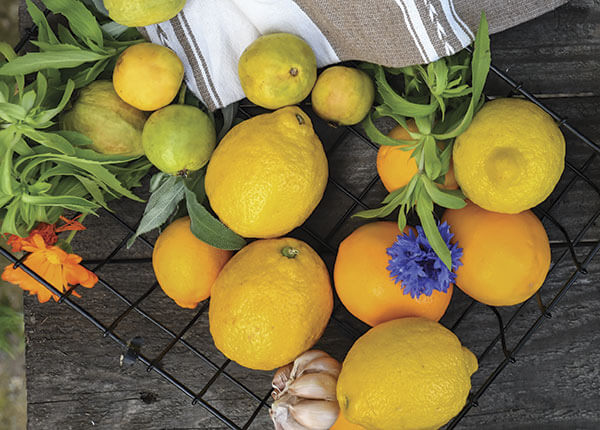
Whole lemons are used as styling props by chef Allie Chandler in her grazing tables and platters. Photo: © 2020 Silas Fallstich
Lemons have long been prized for their ability to boost flavor in foods and brighten recipes, but the fruit has become a household staple beyond the kitchen, as people discover the many ways it can be used in not just cooking but in cleaning, health and beauty.
As a registered dietitian and nutritionist in Los Angeles, Megan Roosevelt counts lemons as one of her favorite foods, as they're always in her kitchen and a part of her day. She's been drinking lemon water and adding fresh lemon juice to her smoothies for years, she said.
With her work as a spokeswoman for Santa Paula-based citrus company Limoneira, Roosevelt continues to explore different uses for lemons—from creating recipes and lifestyle content to sharing new ways to enjoy the tart fruit, which she describes as "truly one of the most versatile foods in the produce section."
"I love lemons because they are so quick and easy to enjoy and use in a variety of ways," she said.
For at least the past 15 to 20 years, sales of fresh lemons have been rising as home cooks and restaurants find more uses for them, said John Chamberlain, vice president of marketing for Limoneira. Whereas 60% to 65% of the state's lemons used to go to processors to make juice and other products, he said, more than 73% of the crop was sold as fresh lemons last year, according to the U.S. Department of Agriculture. He noted that even though lemon juice—usually marketed in the little plastic squeeze bottles shaped like lemons—is still available, "consumers are more interested in whole lemons."
"Not only can they use the juice," he said, "they can use the rest of the lemons in recipes."
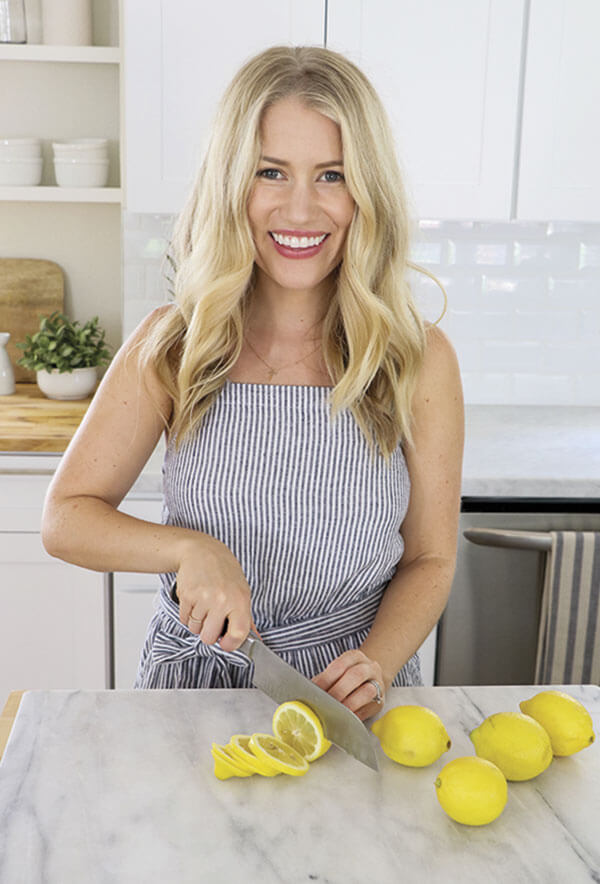
Registered dietitian Megan Roosevelt is a longtime fan of lemons, which she describes as "truly one of the most versatile foods in the produce section." Photo courtesy of Megan Roosevelt
The lemon's role in good health
In Roosevelt's recipes, lemons show up in all kinds of dishes—from sweet to savory to beverages and smoothies, even breakfast. Many of the recipes make use of both the juice and the zest, which she said she likes to add to grilled salmon, salads, on top of yogurt, oatmeal or in baked goods such as homemade energy bars and breads.
There are health benefits to using the entire lemon. As with all citrus fruits, lemons are known for being rich in vitamin C. Adding lemon juice to water not only provides an extra dose of nutrition, Roosevelt said, but the lemony flavor helps some people drink more water. Staying properly hydrated, she added, "is crucial to help our body naturally cleanse and detox."
In addition to being packed with flavor, the rind is "incredibly nutrient dense," Roosevelt said, noting how it is a major source of limonene, a compound found in citrus peel that can help support heart health and prevent cancer.
Lemons can cut the amount of salt in some recipes because their acidity enhances the other flavors in food, she said. If a recipe calls for 1 teaspoon of salt, reduce it to 1/4 teaspoon of salt and then add 1/2 teaspoon of lemon zest and 1 tablespoon of lemon juice, she suggested.
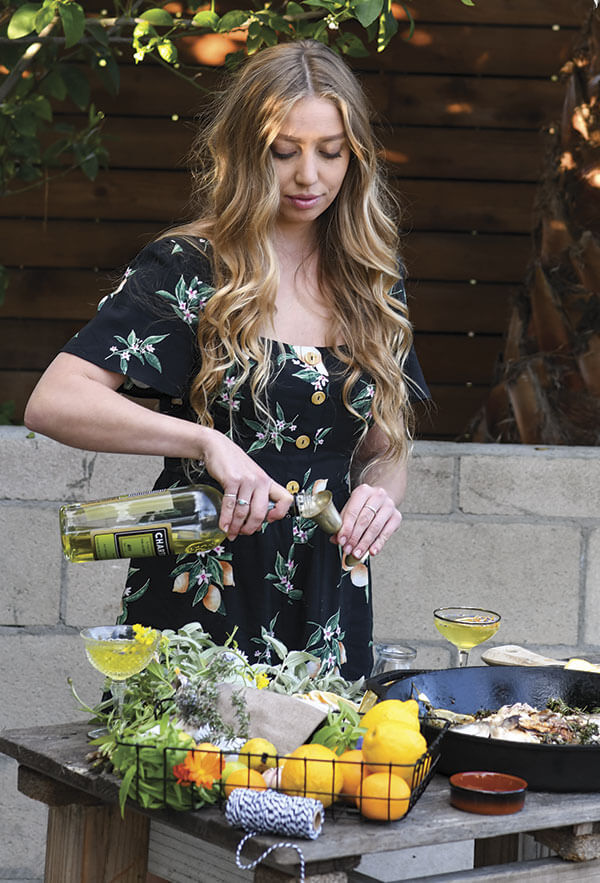
Chandler considers fresh lemons "a fundamental part of cooking," such as for bringing out the flavors of fish and as a key ingredient in citrus cordials. Photo: © 2020 Silas Fallstich
Lemon-centric foods abound
Chef Allie Chandler, who owns a catering business in Santa Barbara, calls lemons and other citrus fruits "a fundamental part of cooking." Fish and lemon are already a classic combo. For a new twist, she stuffs the inside of a fish full of lemon slices and herbs, then covers the fish with a mixture of salt, egg whites and a small amount of water. Once baked, the salt mixture becomes a hard crust around the fish and acts as a casing "to hold in all the flavor of the lemons so that it's infused within the fish," she said.
"When you take the fish out, you have to use a spoon to crack it open, and then you have the most gorgeous two-piece, flaky fish," Chandler added.
In addition to making candied lemons and dehydrating them for garnish, Chandler said she likes to use the whole fruit as a styling prop in her grazing tables and platters. She also makes designs out of the rind before juicing the lemon.
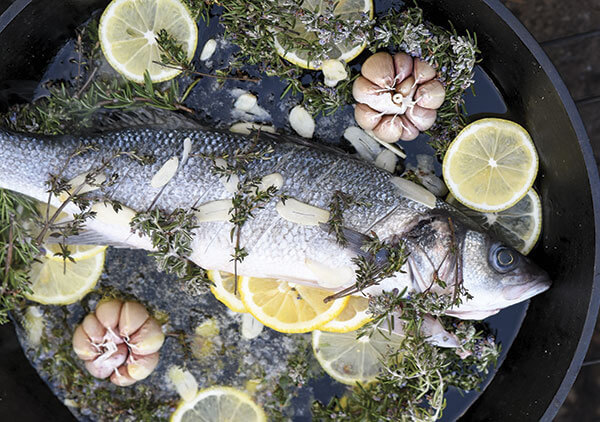
Chandler uses fresh lemons in cooking fish, a classic combo. Photo: © 2020 Silas Fallstich
Lemons also act as a base ingredient in many drinks—and not just lemonade, she said, citing citrus cordial as one of her favorite cocktails.
"I think a lot of people don't realize how important lemons and acid are in drinks, to bring balance," Chandler said.
Traditional lemon-centric foods such as lemon bars, lemon meringue pie, lemon ice cream and sorbets, and chicken with lemon sauce continue to be highlights of the Goleta Lemon Festival, said April Lee, events coordinator for the Goleta Chamber of Commerce, which hosts the annual event in September. Her favorite remains the lemon ale and the lemon IPA, or Indian pale ale, both of which are brewed specially for the festival, she said. Another big hit is the lemon mimosa, which she called "an exciting twist on the standard mimosa," as it uses lemonade instead of orange juice with sparkling wine.
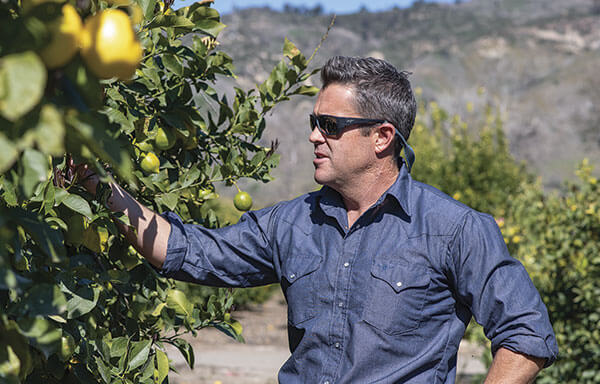
Most of California's lemons come from the coastal region of Ventura County, where Will Pidduck farms. Photo: © 2020 Silas Fallstich
It's a household cleaner, too
Beyond food, lemons make a "fantastic natural cleaner for all around the home," Roosevelt said, noting that the citric acid breaks down stains, and the oils from the peel leave a fresh, clean scent. For a simple multipurpose cleaning solution, she mixes fresh lemon juice with water, vinegar and essential oils.
"This gentle cleaning solution is nontoxic and can be used on countertops, sinks, the bathroom and even floors," she said.
For cleaning, always dilute the lemon juice in water or vinegar and test it before using, she suggested. Avoid lemon cleaners on natural stone countertops. When adding lemon juice to laundry, stick with cottons and polyesters, as the citric acid may harm certain fabrics, she said.
California remains the nation's top lemon producer. For farmers growing lemons and other citrus fruit, the biggest threat to their trees aside from drought and other weather problems is the Asian citrus psyllid, a pest that feeds on citrus leaves and stems, and that can infect the tree with the deadly plant disease known as Huanglongbing, or citrus greening.
Though lemon orchards can be found in the San Joaquin Valley and the Coachella Valley, most of the state's lemons come from the coastal region of Ventura County, where the cool ocean breezes and temperate climate allow farmers such as Will Pidduck to grow the fruit nearly year-round. Except for December and January, "when not a lot is going on," he said his trees bloom multiple times during the year, lending to three to four pickings.
"That's why Ventura County is such a lemon powerhouse," he said. "We're constantly in a state of harvest or almost getting ready to harvest."
This time of year is considered peak season for coastal lemon growers, not only because a fresh crop is being picked but because as summer approaches, "everyone's thinking lemonade," Pidduck said.
Lemons are harvested by hand and picked when they reach the optimal market size. In a typical year, Pidduck said, about 80% of his lemons are sold as fresh fruit, which is what farmers aim for, as "the juice market was never a very lucrative business to be in." Lemons that show cosmetic damage to the rind or are too large get sent to the juice plant, he added.
Though shoppers now buy more fresh lemons, the biggest demand for the fruit still comes from food service.
"You go out to restaurants now and everyone wants lemons in their water," Pidduck said.
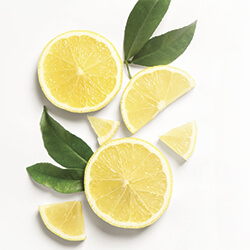
Photo/Shutterstock
In search of the perfect seedless lemon
Seedless varieties of oranges, mandarins, grapefruit and limes have all been widely available on the market for years, so why not lemons?
Years of work to create a truly seedless lemon that rivals the quality and productivity of seeded lemons could relieve the hassle of trying to pick the pips out of your lemon iced tea.
The Los Angeles-based Wonderful Co. introduced its seedless lemons last fall. It has been ramping up production of seedless lemons, with about 3,500 acres in California and another 1,000 in Mexico, according to Etienne Rabe, vice president of horticulture for Wonderful Citrus. Though supplies during this first year have been limited, he said "sizable volumes" will come as trees mature.
In truth, so-called seedless lemons have been around for years, but they never caught on because farmers weren't enamored of them, Rabe said. Not only did those older varieties bear less fruit than traditional seeded ones, but the lemons weren't totally seedless, he noted.
"It's not that easy to get a seedless lemon," Rabe said.
Most of Wonderful's seedless lemons stem from two varieties developed in the late 1990s by an Australian farmer who studied thousands of lemon buds, in search of the perfect seedless variety. Wonderful also grows another seedless lemon that originated in South Africa.
The question, Rabe said, is whether people would pay more for seedless lemons—and whether enough growers would remove their old trees and plant the new varieties. Rabe said he thinks farmers will make the switch, just as they did with seedless oranges and mandarins, grapes and watermelon.
"If this thing proves to be successful as we hope, the new lemon of choice will be the seedless lemon," he said.

